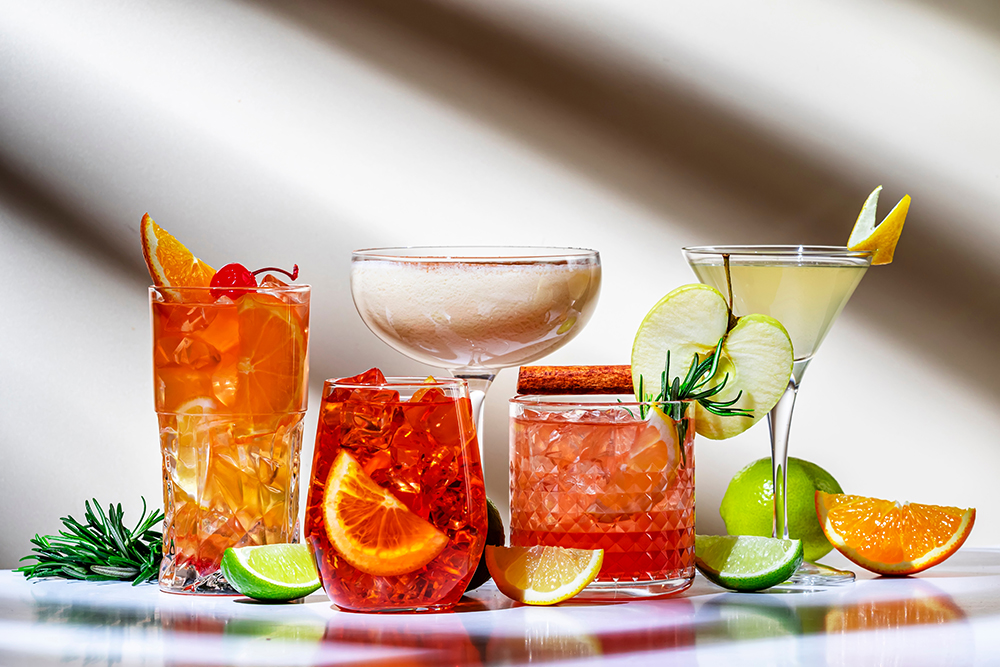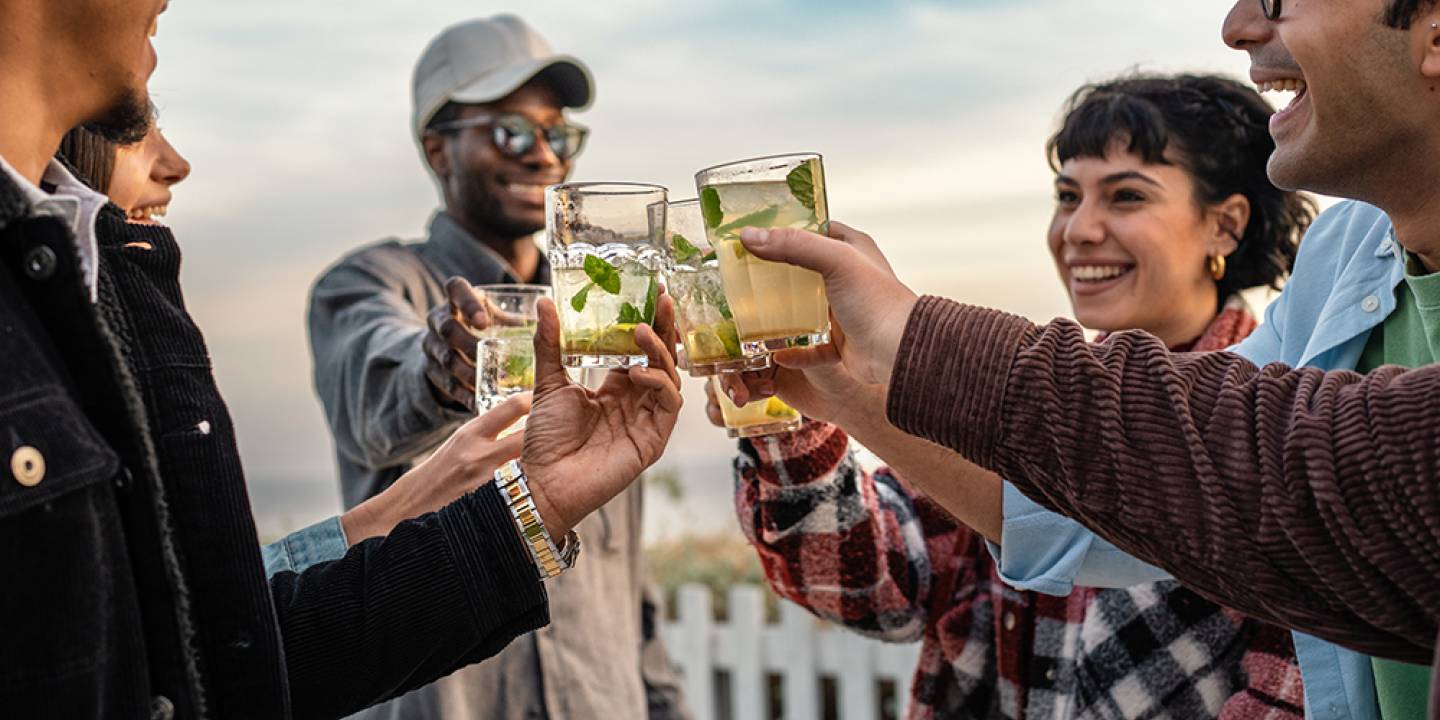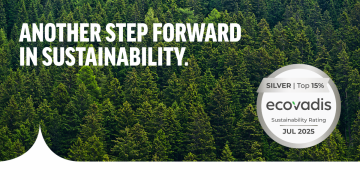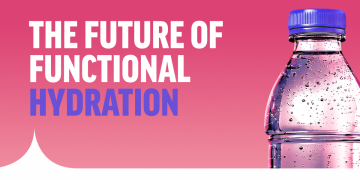A health and wellbeing sub trend led by Gen Z and millennials
Public health consciousness has gained pace in recent years, fuelling consumers to support their emotional wellbeing. With this broader trend towards improved health and wellbeing in mind, many individuals are seeking to moderate or eliminate alcohol consumption in favour of a healthier alternatives. According to a Mintel report, 59% of British adults either limit their alcohol consumption or do not drink alcohol at all. Concerns over alcohol's negative effects on sleep patterns are also key motivations for drinking low-/no-alcohol (also knowns as ‘LowNo’) drinks among 52% of category drinkers.
Often termed as ‘mindful drinking’ or ‘sober curious’, these trends are being led primarily by younger adults; 18-34s are more likely (53%) to have cut back on alcohol in the last 12 months, and 18-24s are the most likely (27%) to be teetotal. Under-35s drink LowNo beverages more frequently than older cohorts, with 46% doing so once a week, or more.
Functional beverages supporting relaxation
Seeking to relax is a key motivation for drinking alcohol, cited by 60% of drinkers. Building associations with relaxation is therefore necessary in order for LowNo variants to better compete in the market. Use of ingredients with relaxing associations, for example, lavender or chamomile, strengthens LowNo drinks’ association with emotional wellbeing. Some retailers are turning to lavender as an ingredient in low-alcohol spirit/ liqueurs alternatives, while alcohol-free beer brands are including the adaptogens ashwagandha and lion's mane in their ingredient deck.
The growth of LowNo variants
Ongoing media coverage of alcohol’s negative health and social effects has added momentum to the alcohol moderation trend. As mentioned, concerns about alcohol’s negative effects on physical and emotional wellbeing are a key motivator for drinking LowNo variants, according to 55% of drinkers surveyed.
LowNo drinks are popular with consumers who have moderated their alcohol intake in the last 12 months. However, these drinks do not appear to be realising their full potential among non-drinkers; only 13% of teetotallers drank non-alcoholic/alcohol-free drinks in the three months to April 2024.
The relatively high price of LowNo drinks can be a barrier to purchase, as well as concerns about sugar content, discouraging nearly half of all adults surveyed from drinking them or drinking them more often. Alcohol-free beers and wines often have higher levels of residual sugar than the standard versions, to compensate for the loss of flavour and body as a result of the dealcoholisation process.
However, LowNo alcohol drinks being favoured by younger adults stands the category in good stead to grow volume sales longer term as many current under-35s will likely continue, or even build on, their moderate drinking habits as they get older.
The LowNo beverage market has grown rapidly between 2019 and 2024, although it still remains a relatively small segment of the market. In 2024, there is an estimated £380m retail value sales of low and no-alcohol drinks, with value sales growth (25.5%) outpacing volume sales (+19.3%) due to rapid price rises.

Innovation opportunities for LowNo alcohol beverages
Beer dominates the LowNo drinks segment, accounting for 61% of value sales and 74% of volume sales in 2024.
Leading alcohol companies are actively encouraging mindful drinking. Brand variations on Low/No alcohol products continued in 2023-24 as seasonal and own-label launches emphasised the treat aspects. Many brands outline their dealcoholisation methods used to ensure taste equivalence with the originals.
Own-label, LowNo product launches in 2023-24 emphasised their high quality and complex flavour profiles. As only half of drinkers see LowNo alcohol as a ‘treat’, focusing on flavour credentials is crucial for the category to drive relevance across a wider range of occasions. Consumers are looking for options that not only mimic the taste of traditional alcoholic beverages, but also offer exciting, unique flavours and fragrances to create a memorable drinking experience. LowNo alcohol brands continue to expand their range of usage occasions through seasonal launches as well. Many seasonal LowNo alcohol launches in 2023-24 emphasised the products' sensory appeal.

Market predictions around mindful drinking
Retail value sales of Low/No alcohol drinks are expected to grow by 55.7% to reach £592m, and volume sales by 41.5% to 149 million litres, between 2024 and 2029. In 2025-26, premiumisation of LowNo alcohol drinks will boost sales as consumer finances improve. Into 2027-28, there will be a sustained focus on health and wellbeing, which sets a positive trajectory for the category's long-term sales growth. Consumers will continue to be encouraged by the media to moderate their alcohol intake, fuelling demand for low-/no-alcohol options.
One of the key implications of the changing drinking landscape is the need for innovation, specifically around flavour profiles, encouraging those seeking a non-alcoholic beverage to consider viable alternatives.
Stay in touch
To receive our latest insights, straight to your inbox, sign up to our newsletter by clicking the box on the left of your screen and completing the short form.
You might also like...
- Innovation opportunities when appealing to an ageing population
- Trends driving innovation in 2024
- How generational influences are shaping the beverage market
- Everything you need to know about the personalisation trend
Sources: https://clients.mintel.com/content/report/attitudes-towards-low-and-no-alcohol-drinks-uk-2024 Kantar Profiles/Mintel, April 2024



